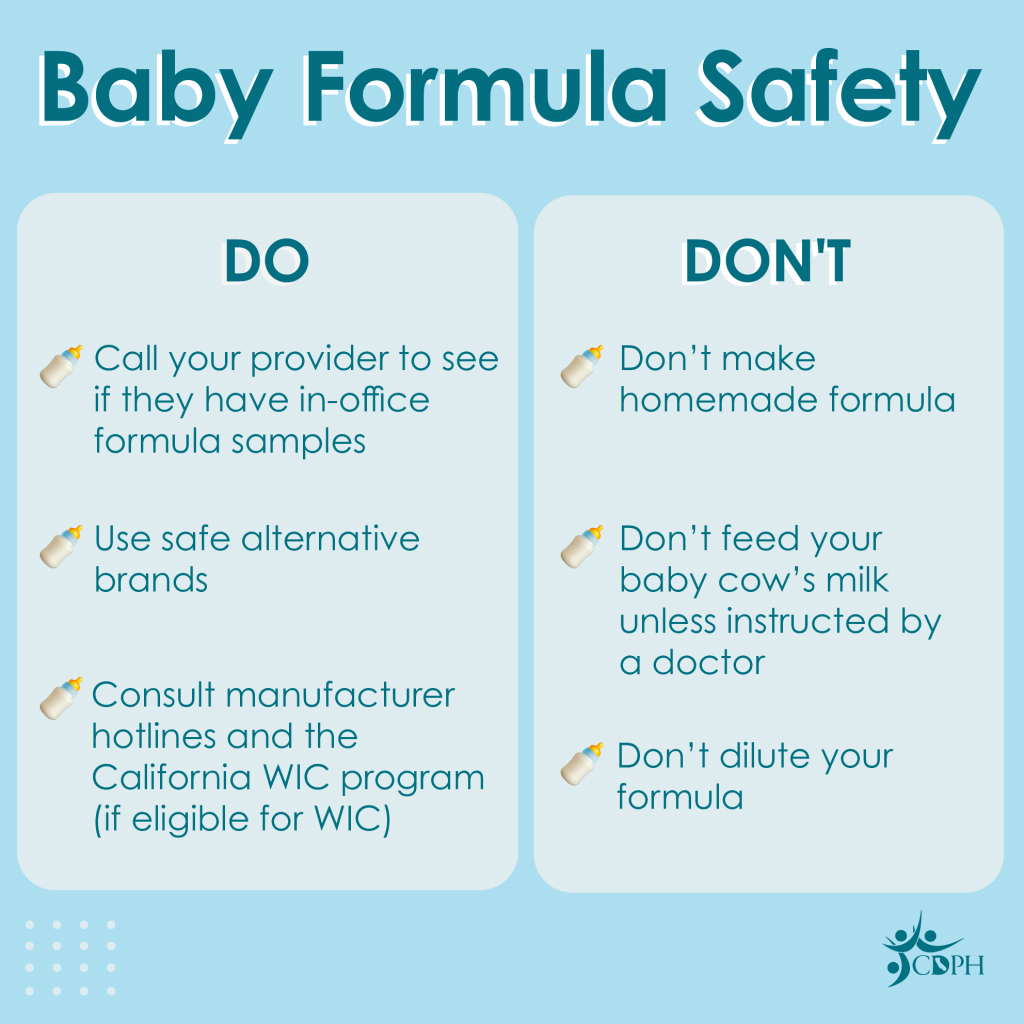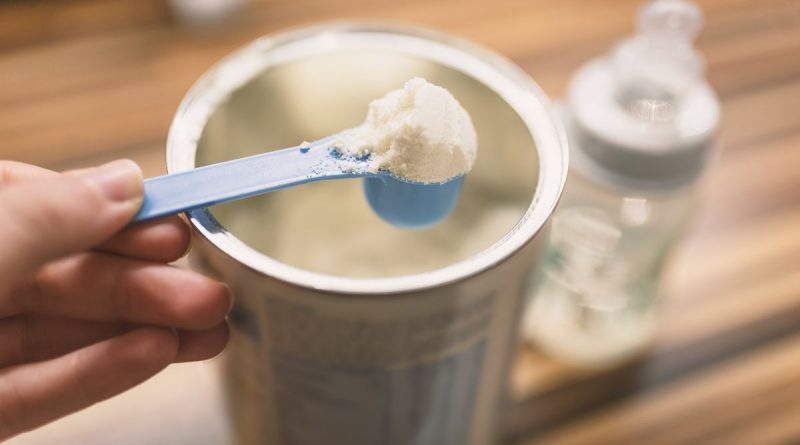Infant Formula Resources for Families in L.A. County and Across California
[UPDATE: Links to Spanish-language resources were included below.]
[UPDATE: The National Collaborative for Infants and Toddlers will host this webinar on July 22 at 11:30am PT:
Feeding Babies and Toddlers Safely: Update on the Formula Shortage]
[UPDATE: See the video below for a presentation by PHFE WIC’s Sagrario Nielsen, Deputy Director of Nutrition Services & Projects. Recorded at the Maternal and Child Health Access Monthly Meeting on June 16, her presentation includes lots of helpful information on which formulas are available through WIC and how families can access them.]
[UPDATE: A letter outlining the California WIC program’s request for health care providers who prescribe formula (22 calorie/ounce) for premature infants enrolled in WIC was included below.]
The infant formula shortage is impacting families across the nation. Here’s a roundup of resources and information to help. To help local families, the L.A. County Department of Public Health produced this guide: Baby Formula Shortage in Los Angeles County: Tips, Guidance, and Resources.
California Department of Public Health (CDPH)
CDPH issued this health advisory and maintains this continually updated webpage (also in Spanish), along with info sheets in multiple languages for families who are having difficulty finding infant formula. CDPH recommends that parents and caregivers should:
- Call their healthcare provider to see if they have in-office samples or can suggest a similar formula.
- NOT dilute formula with extra water, NOT make homemade formula, and NOT provide toddler formula.
- Reach out to their local WIC office if they are current WIC participants or are eligible for WIC.
- Try another brand of formula, if available. Babies usually tolerate alternative products except in the case of special therapeutic formula. For babies on therapeutic formula, consult with a healthcare provider first to get help or to discuss alternatives.
- NOT feed infants under one-year-old cow milk or other milk substitutes from the dairy section of the grocery store (e.g., almond or soy beverages sometimes labeled as milk).
- NOT use imported formulas from other countries that are not reviewed by the FDA.
Formulas prescribed for prematurity: Options of WIC families: This letter outlines the CDPH Women, Infants and Children (WIC) program’s request for all health care providers who prescribe formula (22 calorie/ounce) for premature infants enrolled in the WIC program.
Formula recalls: Certain lot numbers of Similac, Similac PM 60/40, Alimentum and EleCare powdered formulas have been recalled. Check the lot number on the bottom of your formula to see if your formula needs to be returned. If you have recalled formula, do NOT use it. Return it to the store or call the manufacturer at 800-986-8540 for replacement. Find out more about the recall at the Abbott Recall webpage (SimilacRecall.com).
California’s program for Women, Infants, and Children (WIC)
WIC is expanding its infant formula coverage. If a WIC client experiences a formula shortage, have them notify their local WIC office and a Crisis Coordinator will follow up with the client. See MyFamily.WIC.CA.GOV for information and updates, including:
- Steps we are taking
- Temporary formula options
- Finding formula
- Infant formula safety
- Breastfeeding support and education
- Questions and answers
- Abbott recall information
Breastfeeding and Donor Milk
Breastfeeding is widely considered the most healthy way to feed an infant, whether formula is available or not. To prepare families during pregnancy, see the Breastfeeding Information and Resource Guide by LABBN (also available in Spanish).
Milk Banks are available for families in need of breast milk which can be ordered or for donors interested in donating their breast milk:
- Mothers’ Milk Bank of San Jose
- University of California Health Milk Bank
- Milk Collection Sites
- Use of Donor Human Milk
The Academy of Breastfeeding Medicine recommends the following for those currently NOT breastfeeding:
- Consider re-lactating. Re-lactating is the process by which a person who has given birth may ramp-up milk production after a period of not lactating or partially lactating. (Note, seek consultation with a skilled lactation provider and/or expert in Breastfeeding Medicine if you plan to try to re-lactate. This may be a challenging process for some, especially the further out one gets from birth.)
- Consider pasteurized donor human milk from a certified human milk bank if you have the means and availability to purchase.
- If you are considering using anyone’s breastmilk other than your own, consider safety and ensure informed decision making that considers the potential risks and benefits, and consider donor screening and flash pasteurization. (Note, this should only be done with trusted family members and friends, and ideally the donor would have had testing to make sure they were free of any transmissible diseases.)
- Talk with your baby’s doctor about the timing and appropriateness of introducing solid foods no more than 2-3 times/day in place of a bottle feeding.
- Do not give your baby under 6 months of age any water, tea, or juice.
More Resources
- CDPH: Infant Formula Page (English) | Formula Para Bebes (Español)
- HHS: Find Formula During the Infant Formula Shortage (Español)
- AAP: With the baby formula shortage, what should I do if I can’t find any? (Español)
- Mahmee: Safe Preparation of Infant Formula



I need baby formula for my baby
Hi Cassandra,
We would recommend signing up for WIC, and they can help you get formula and other healthy foods for you and your baby. You can sign up here:
https://www.phfewic.org/en/how-wic-works/apply-for-wic/
I need baby formula for my sin
Hi Roseline,
We would recommend signing up for WIC, and they can help you get formula and other healthy foods for you and your baby. You can sign up here:
https://www.phfewic.org/en/how-wic-works/apply-for-wic/